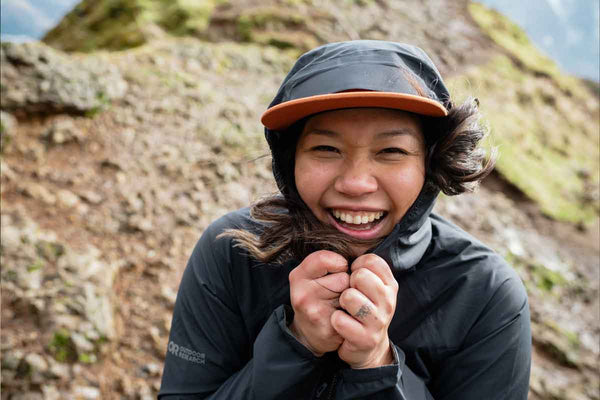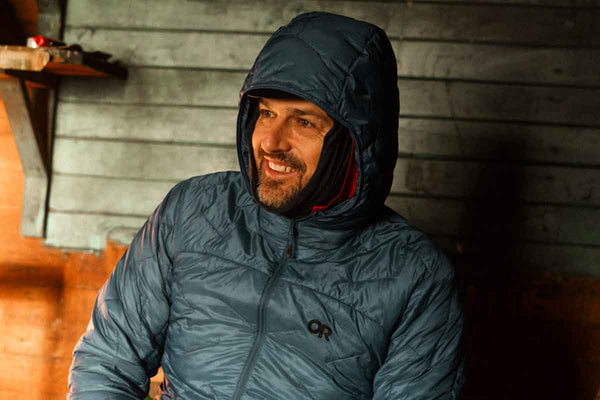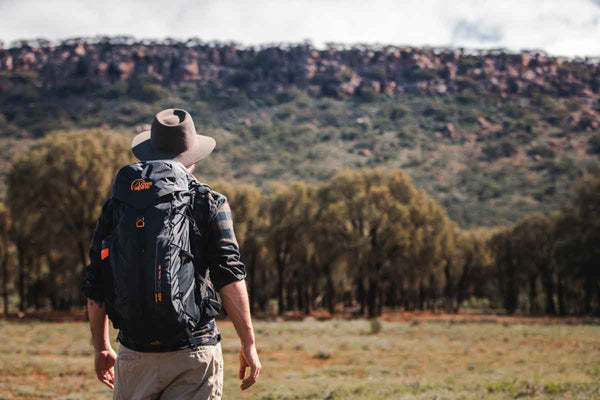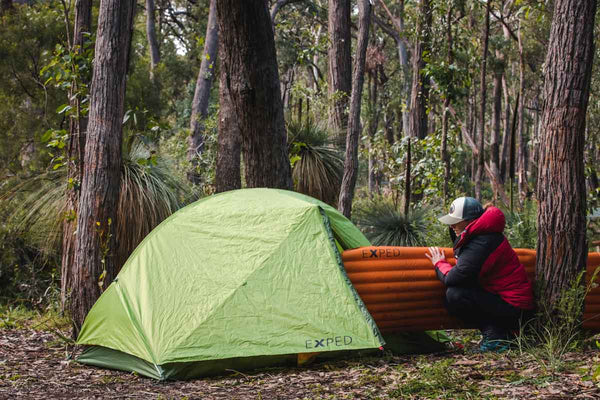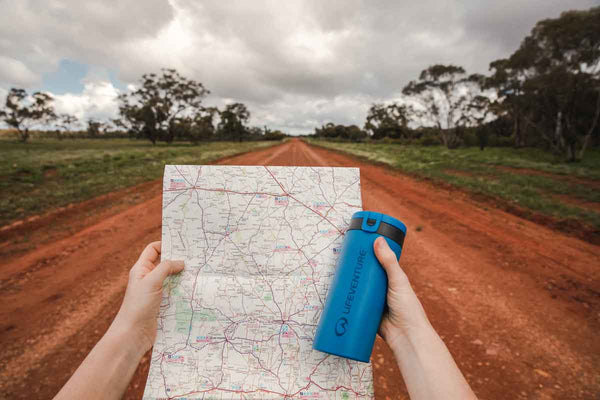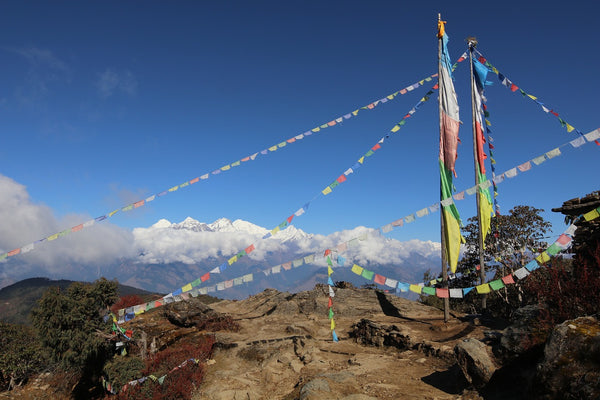
Scratching a Twitch: A Lollop in Langtang, Part I
by John Jamieson
Inspiration
Like many trekkers around the world, the Himalaya has long been enticing me from afar. After three years equipping customers for Everest Basecamp and Annapurna treks at Trek & Travel and sending them off into the snowy distance, I was determined to get there myself. Thankfully my father harboured the same desire and a trip to celebrate him joining the sexagenarian club was pencilled in. As it turns out those plans were de-railed for a short while as I spent that year breeding and producing a tiny little Australian! After successfully keeping our little treasure alive past her 1st birthday and somehow retaining a modicum of sanity it was time to get the trip back on course. The optimism of the New Year saw the sleep-deprived fog momentarily dissipate long enough for me to grab the Yak by the horns and finally book a trip to the fabled Himalaya.
In anticipation of the trip of a lifetime my father jumped into preparation with gusto, starting at the local gym and training hard! Being somewhat time and energy poor, I on the other hand was relying upon the repetitive lifting of a squirming 11kg mass and the pushing of said mass uphill to and from the grocery store to get me trek fit.
Unsure which of the myriad regions to explore, and which trek would be appropriate for our first taste of altitude, I enlisted the help of Dip from Expedition Base to decide on a region and put an itinerary together. After his advice, and that of my colleagues at Trek and Travel, we settled on an area and the Lollop in Langtang was on!
Why Langtang?
April 25th 2015 was a day that shook Nepal with a massive 7.8M earthquake, causing devastation across much of the country. The same quake that caused the avalanche on Everest, killing 21 people, hit the Langtang region particularly hard with entire villages destroyed and over 400 killed. Tourism in the area suffered greatly in the following years, with time needed to repair much of the track infrastructure, rebuild tea houses and for communities to begin to regather. Thankfully a lot of money (largely external) has since been invested in the area and the valuable trekker rupee is following. Keen to travel with a conscience, the opportunity to contribute to the recovery of the area as a tourist was an important motivation for us both.
Long thought of as the third most popular trekking area in Nepal (after the Everest and Annapurna regions) the Langtang Valley is renowned for its biodiversity, scenic beauty and relatively less-trodden trails. Being a wildlife biologist in the real world, and my father being a botanist, we were very excited to explore the valley and were ready to Attenborough the heck out of it! At just 19 miles north of Kathmandu as the Vulture flies, the region is also one of the easier trekking areas to access which, given our short time frame of only 12 days in country, made it an appealing proposition. A note of caution should be taken when revelling in this proximity to the city though, as the circuitous, serpentine roads of Nepal can rarely be described as direct (or indeed roads in most cases) meaning a bumpy 6/7 hours in a jeep is still necessary to get to the trailhead.
Having arrived independently from opposite sides of the globe (UK and Australia) we had the first day to explore the dusty streets and temples of Kathmandu before completing our gear check with the guys from Expedition Base at our hotel. We chose to trek as a group of two, accompanied by just a guide and porter, to allow us to go at our own pace and indulge our ornithological and botanical fascinations without fear of holding people up.
Upon meeting our guide Galden, a slight alteration to the itinerary was suggested to make the most of a 'new road' that would cut 2/3 hours off the drive. Instead of beginning the trek in Dhunche we opted to take this new route to Syabrubesi and begin from there. In hindsight the fact that this new road was not on any of the maps should have been an indication of the adventure that lay ahead!
Day 1: Kathmandu 1500m – Syabrubesi 1500m, Bird Count 4
Content with the fact that we had a private jeep transfer we were confident we would be travelling in relative comfort compared to the bus. Actually, the jeep turned out to be a little less private than we imagined, sharing as we were with 4 others, but we were assured that there would be no more than us three in our seats and that did just fine.
Heading out of the chaotic traffic of Kathmandu we gradually wove our way up the valley and hit the main road. We made good time at first, before steep terrain, ancient trucks and kamikaze driving skills brought us to a grinding halt. Idling in the stifling heat I amused myself noting the quirky bumper sayings on the rainbow-painted Tata trucks. ‘Trust your mother’ was probably my favourite but ‘Always have positive expectations’, ‘Risky job’, and ‘Empty heart’ also entertained.
Leaving the regular route to Dhunche we veered left and began the short cut that was the 'new road'. Following the banks of the Trishuli River we headed north towards Tibet. The road is a work in progress, meaning some parts look like a road and others like a ploughed field. Massive hydro plants in various stages of construction dotted the course of the river as we bumped and slid along. Initially all was great fun, the adventure had begun and everyone likes a bit of off-roading, right? Things got real when the road wound its way up away from the river and began to resemble the road of death in Peru! Cartoon snippets of Coyote plunging to his death into canyons in pursuit of Roadrunner played over in my mind as my knuckles grew progressively whiter gripping the seat ahead.
The more precipitous sections were met with silence from all passengers, the driver putting his phone down and both hands on the wheel, and me inevitably shutting my eyes! At one such point we drifted sideways through a boulder-strewn river underneath a waterfall, with a vertiginous drop of hundreds of metres just centimetres from the rear wheel! With death sidestepped and a big exhalation of breath, we finally rolled into the multicoloured mountain town of Syabrubesi, from where we would begin our trek the following morning.
Day 2: Syabrubesi (1500m) – Sherpagaon (2563m), Bird Count 10
After an early breakfast of porridge and Himalayan honey, we were eager to get on the trail. Meeting our porter Sanja (from the nearby village of Dunche) we guiltily watched as he lashed our duffels together and hoisted them up on a strap around his forehead. Did we really need that extra fleece or book?! Sufficiently reassured by Galden that Sanja regularly carried in excess of 30-40kg and that our measly 20 kg would be a breeze, we set off from Syabrubesi.
Walking out of the village, my initial excitement was dulled slightly as we rounded the corner to be greeted by our first suspension bridge. Still suffering PTSD from the 3-wire trapeze props that pass as bridges in New Zealand, I was expecting such crossings to be something of my nemesis. Gingerly edging across the walkway I was pleasantly surprised by its rigidity, stability and lack of sway. Suitably relieved, we crossed and began our climb out of the valley. Not long after we turned left off the main track and took the high route towards Sherpagoan – Village of the Sherpas.
Weaving our way up through small terraced farmsteads and coniferous forest, it became apparent we had dressed for the frosty Himalayan temperatures of our imagination and in reality, shedding layers, I soon ended up in just my favourite Earth Sea Sky Silk Weight T-Shirt. Climbing higher and higher, the forest grew thicker and it was not long before my dad found his first Rhododendron in flower! While stopping to catch our breath I chalked up the first of many forest bird species with the glorious tail streamers of the Yellow-billed Blue Magpie (Uricussa flavirostris) - my first real twitch of the trek. At many of our rest stops it was sadly also clear that nowhere is immune to the plastic scourge of discarded water bottles and I was pleased we would not be adding to them with our trusty Steripen onboard.
By midday we had made our way to Khangjim at 2235m, which was to be our much-needed lunch stop. Reaching the outskirts of the village our guide pointed out the bristled leaves of the Himlayan Nettle (Garardinia diversifolia). With a multitude of uses from stews to rope fibres, it was the traditional use of the plant to whip adulterous couples into repentance that seemed to be its most novel application! As we preferred to try the culinary use of the nettles, Galden ordered us nettle and bean stew alongside or first momos.
Rested and sated, we continued our climb along walled terraces and up through the forest. Reaching the cusp of the hill the trees cleared, unveiling our first glorious glimpse of the Langtang Valley. Tiny villages clung to the steep slopes opposite as the ruby gems of flowering Rhododendrons glistened in the dense vegetation below. Snow-capped peaks framed my periphery and hinted tantalisingly at the mountain vistas to come. Catching our breath, a Bearded Vulture (Gypaetus barbatus) soared majestically overhead completing the perfect introduction to Langtang. This was going to be a good trip!
With the hard climbing behind us we traversed the contours of the gently undulating ridge for another hour or so until we came to our home for the evening. Sherpagoan consisted of just a handful of tea houses perched precariously to the valley side. In what was to be a consistent theme during the trek, the lodgings to which our guide led us were the very last in the village! Hotel Tibet turned out to be a fantastic introduction to the world of tea houses with its multicoloured walls harbouring our comfortable twin room, ensuite no less!
Being early in the season and on the less travelled route, we had the entire guesthouse to ourselves. After a hot shower we nursed our weary legs down the steps to the cosy dinner room where we were greeted by our hosts, two elderly sisters in traditional heavy Tibetan garb, and were soon sitting fireside with cups of steaming ginger tea. As I identified and logged the day's birds, the sisters muttered incoherently between themselves. To my uncultured ear their mumblings sounded like some form of adoration for the secretary from the James Bond movies. Our guide later told me that the Manipeni chant was an important Buddhist mantra increasingly adopted by those approaching old age hoping to smooth the journey to the next life. As firelight danced upon the faces of the sisters, etched by weather and wisdom, we imagined what they had lived through and postulated as to their age. Carried away in some sort of National Geographic glow, we grossly overestimated and found that they were in fact only one year older than my father, much to his chagrin!
Tune in for Part II of John's Lollop, in which he actually does some hiking, sometime in the next few weeks.

